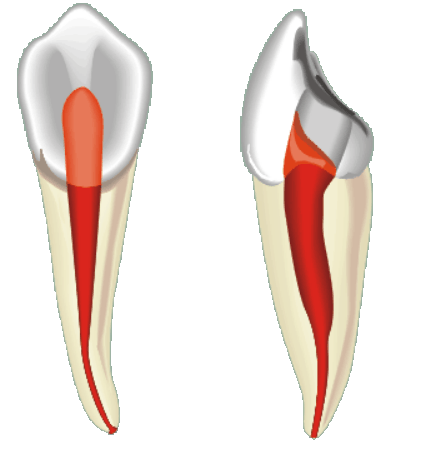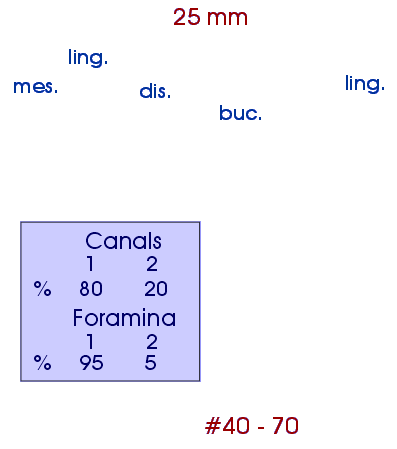D43




#43. The mandibular canine is the second longest tooth in the dentition, it is only 1 - 2 mm shorter than the upper canine. As in the lower incisors, there are often two canals, which usually (but not always) join before the apex. Sometimes there are two roots in the lower canine: a buccal root and a lingual root. The canal is much more flattened than in the upper canine. The canal is, however, quite large and usually does not cause any technical problems during instrumentation. However, teeth with two roots are often quite difficult to instrument. As in the lower incisors, the long axis of the canal meets the crown surface at the incisal edge or on the labial surface. If not taken into consideration, this may lead to a deviated preparation, the emphasis again being on the labial side of the canal. The lingual canal must be looked for using a small file with a curved tip. The lower canine is often quite straight, but sometimes the root tip and the canal curve distally and/or labially.